
How to create a wildflower meadow from scratch
Lesley Ann Sandbach
Our first, tiny wildflower meadow was made from an area of lawn on a slope
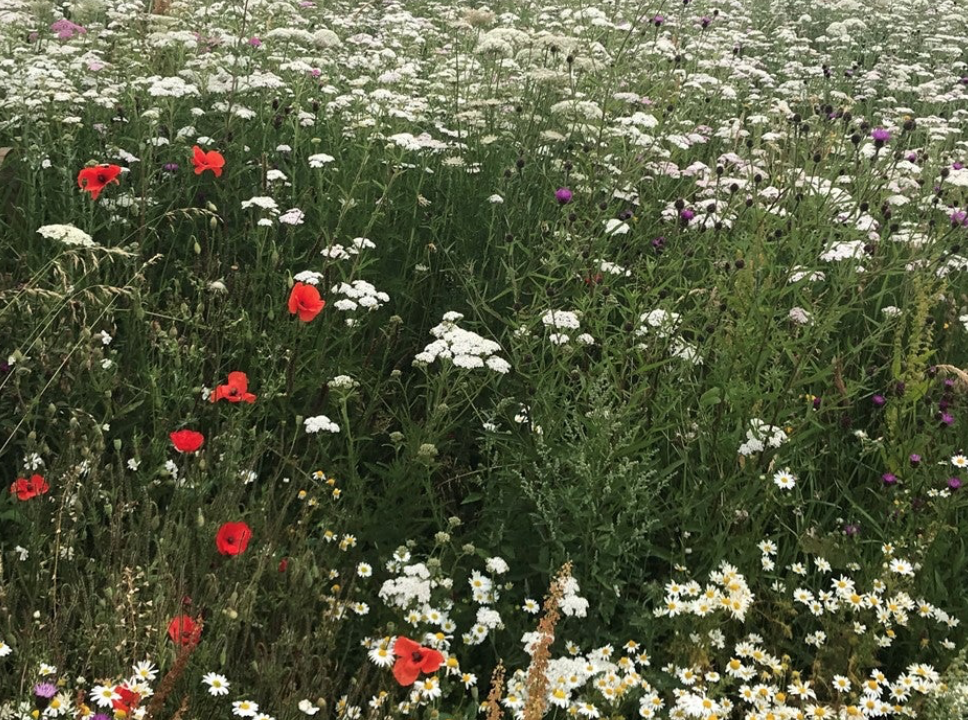
By the second summer, the wildflower meadow was well established.
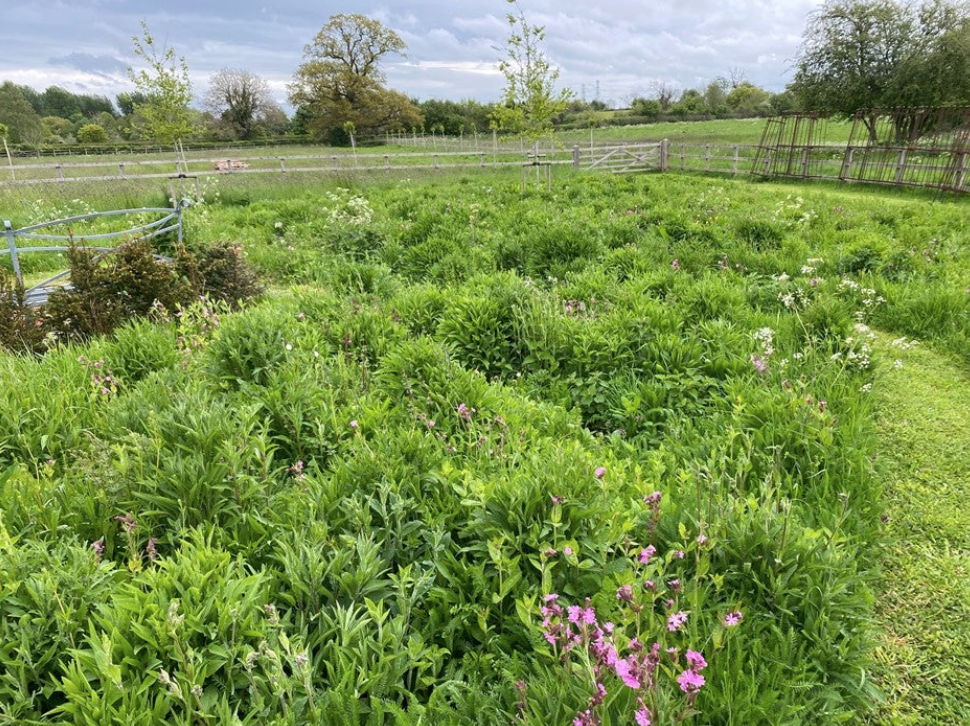
Cow parsley froths along the edges of the mown path.
Our traditional meadows are in steep decline. According to Royal Botanic Gardens Kew Director, Richard Deverell, we have lost 97% of our wildflower meadows since the 1930s. Development of land for property and changes to farming methods are largely to blame, but “responsibility comes a little closer to home too. Our gardens used to be pollinator friendly, full of food, herbs and medicinal plants. Now we are more likely to have decorative plants in our gardens and are less likely to leave long grasses and hedgerows” (Royal Botanic Gardens Kew).
Wildflowers provide vital feeding and nesting habitats for insects, butterflies, birds and other wildlife; they thrive on unproductive soil where vigorous grasses don’t out-compete the flowers and, above all, they are joyous spaces. Therefore, it’s important that we all do our bit, no matter how big or small, to rebuild those habitats. But where to start? What’s involved? We’ve created a couple of wildflower meadows over the years, so I thought I would share my experiences and what I have learned in the hope that it will help you create your own.
My inspiration
I have always loved plants – my mother was a great gardener and she encouraged both me and my brother (now a biologist and environmentalist) to look at growing plants and notice their habits. As a child, I knew all of the wildflowers that grew on the limestone escarpment above our small farm in the Cotswolds. The particular flowers that I remembered were the cowslips, scabious, harebells, wild thyme, milkwort, orchids and meadow cranesbills that grew freely in Gloucestershire but were not part of the landscape when we moved to Devon. Inspired by those memories, I made my first attempt at creating a wildflower meadow in our last garden, in Surrey.
Getting started
I chose a patch of poor soil on a slight slope that had always been difficult to mow – it wasn’t big, no more than 9 square meters – and I began over the summer to prepare the ground. We kept it mown as short as possible and removed all of the cuttings in order to weaken the grass and also to impoverish the soil.
Summer jobs
In late summer, I scarified the area hard taking off as much grass and thatch as I could, reducing it by about 50%. I scattered seed that I had collected in the hedgerows (mimicking the plants’ natural seed-setting time): red and white campion, ox-eye daisies, wild grass seeds, wild carrot and dead nettle were the easy ones to collect.
Autumn jobs
In autumn, I also sowed the seeds of yellow rattle, a parasitic plant that weakens the regrowth of grass – it is best sown fresh because it isn’t viable for long and requires a period of vernalisation to germinate.
Spring jobs
The following spring I added wild flower plugs of cornflowers, corn marigolds and corn cockles and let it grow until August, just removing the odd nettle, thistle or dandelion that germinated.
Late summer jobs
Once the seeds of the wildflowers had set and fallen, I cut the grass and let it lie for a few days for the final seeds to drop and then raked it off – so that the wildflower area was not enriched by rotting vegetation.
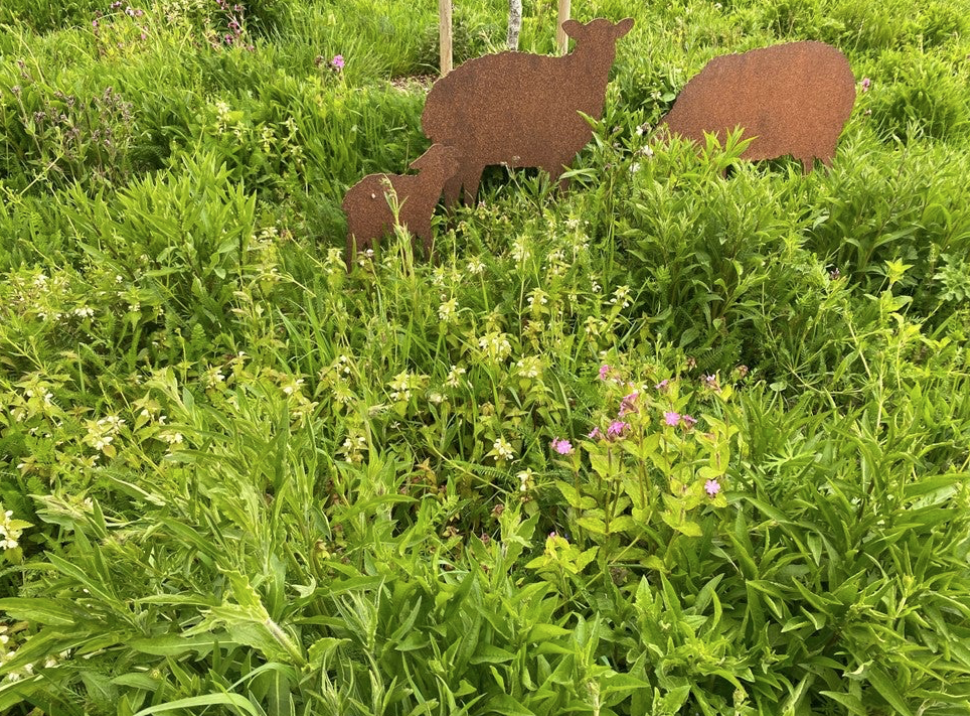
It’s May/June and already our little flock of sheep is disappearing into the meadow – we’ll have to rescue them before the plants are cut back!
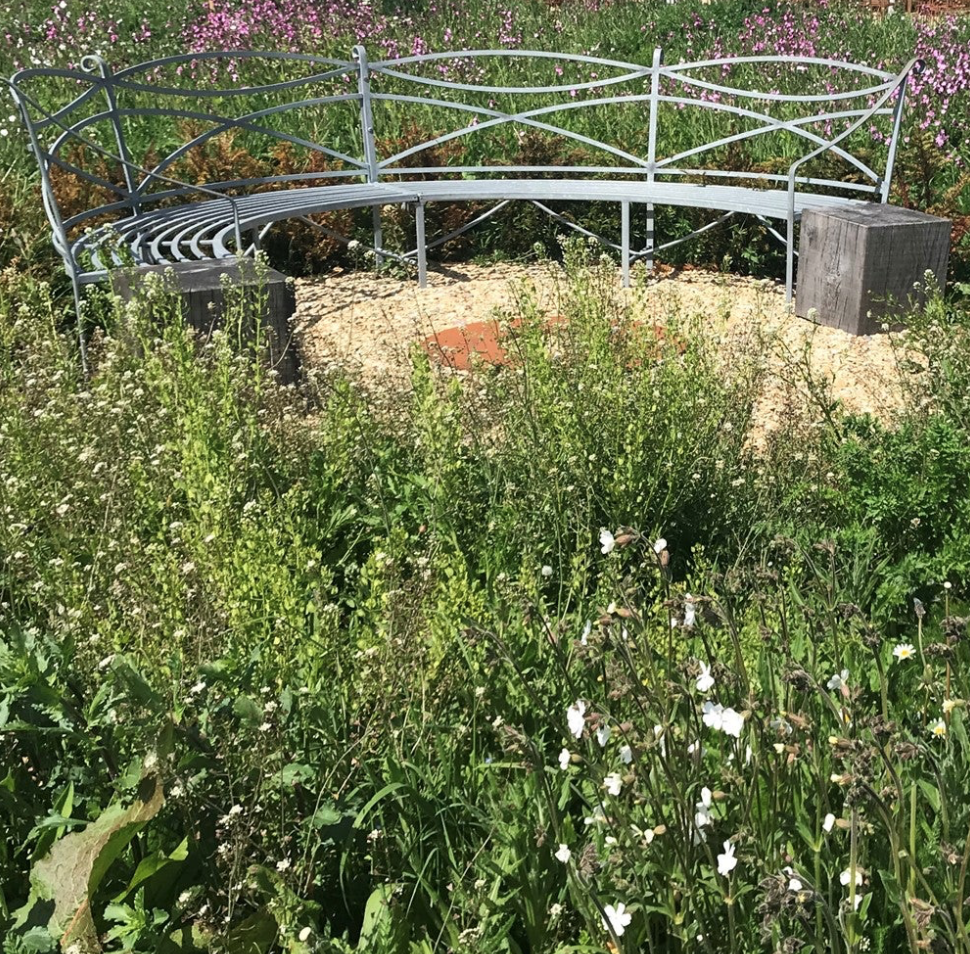
A quiet spot for sitting, nestled in the wildflower meadow.
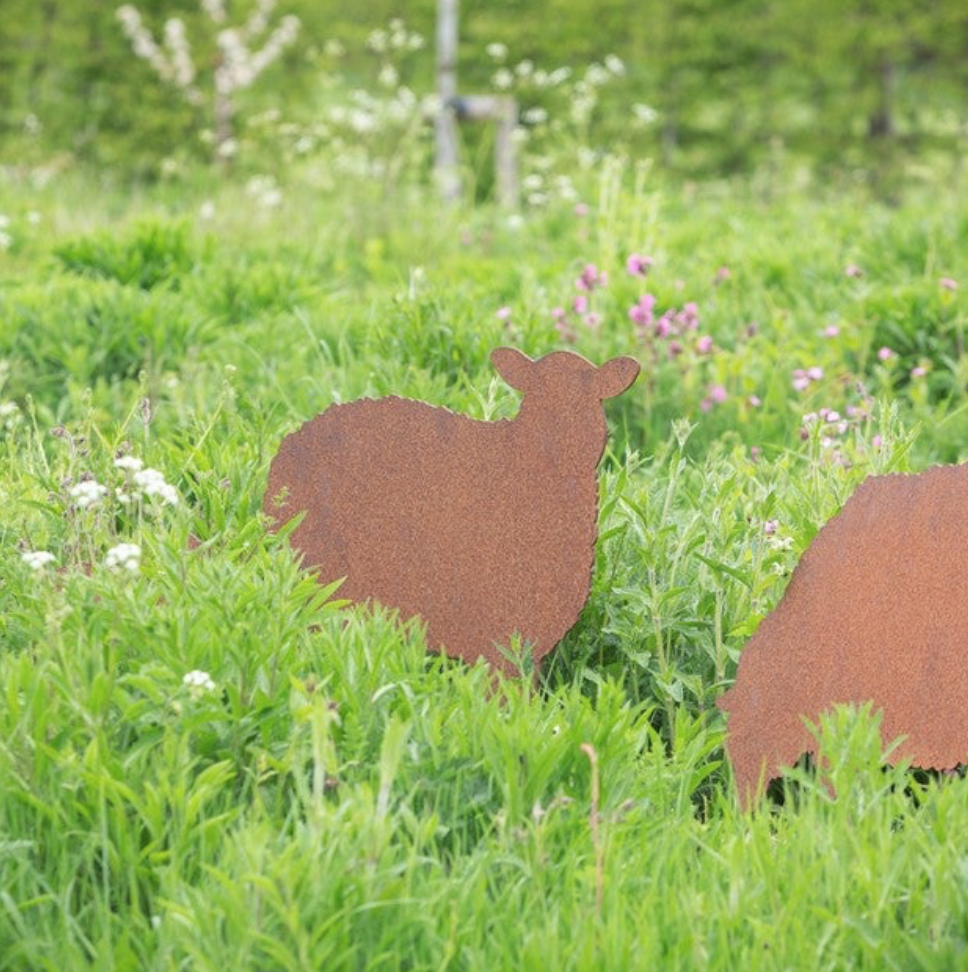
These two are part of a trio, available on our website.
Scaling up
Buoyed by some success, we decided to put down a much larger area of wildflowers when we moved to our new home here in South Gloucestershire. On one side of the driveway ran a broad swathe of rough, uneven land with a paddock on the far side. We got a local contractor to plough and then harrow the land to get rid of the weeds and rough grass and make an even surface. We let it lie fallow over the summer and dug out any weeds that appeared – thistles in their thousands!
What to sow?
In August, we sowed it with perennial grasses and wildflowers from Cotswold Grass Seeds Direct. Emorsgate Seeds, Habitat Aid and British Wildflower Seeds are also reliable suppliers.
Why did we choose to sow perennials? Meadows of colourful annuals, such as poppies, look wonderful but many annuals must be sown into newly turned soil (the poppy fields of the Somme blazed on land that was constantly churned by conflict). Perennial flowers, on the other hand, get better every year and new species establish themselves as the years go by.
This year, in addition to the established perennials, I already have seen field buttercup, ladies’ bedstraw, lesser knapweed, several of the vetches, ground ivy and white deadnettle as well as two or three new grasses (I recognise dogstail, yellow oatgrass and quaking grass among them).
If your space is limited, an annual wildflower meadow will give you colour and a profusion of flowers. You can vary the mix to add garden flowers such as escholtzia, gaillardia or larkspur but the wildflower mix below, planted by April, will provide a colourful display between June and August:
-
45% corn cockle
-
15% cornflower
-
15% corn marigold
-
15% field poppy
-
10% alsike clover
The verdict
I cannot pretend that ours is the classical wildflower meadow photographed in garden magazines (the very best one I know is at RHS Rosemoor, an expanse of colour and delicacy). There are far too many thugs that have taken over – yarrow (Achillea millefolium), black knapweed (Centaurea nigra) and wild carrot (Daucus carota) being the principal ones. But from May to September (by which time it is impossible to mow the spiral path and the plants are waist high) it is a glorious succession of flowers as one plant follows another. And I know that the birds, butterflies, bees and bugs are appreciating the food and shelter!
On a more personal note, the wildflower meadow is such an important space for us here at The Dutch Barn. We have a seat right in the middle of the spiral pathway, nestled amongst the tall flowers and looking towards the source of the river Thames. It catches most of the afternoon and evening sun, making it a wonderfully peaceful place to enjoy a cup of tea or glass of wine and some quiet contemplation.
Browse our complete range of plant supports and steel cut outs at www.muntons.net
Follow us on Pinterest for more advice and inspiration for your English country garden: www.pinterest.co.uk/plantsupports
Follow us on Instagram: www.instagram.com/muntons_plant_supports
Follow us on Facebook: https://www.facebook.com/muntonstraditionalplantsupports
